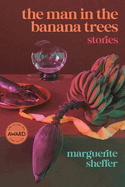
| Publisher: | University of Iowa Press | |
| Genre: | Short Stories (single author), Fiction | |
| ISBN: | 9781609389956 | |
| Pub Date: | November 2024 | |
| Price: | $18 |
| Starred | Fiction |
by Marguerite Sheffer
Marguerite Sheffer won the Iowa Short Fiction Award for her inventive debut collection, The Man in the Banana Trees. Technology and art are major themes, and the 18 short stories here, half of which are flash length, incorporate speculative elements to explore how the past--and the dead--might persist.
Sheffer draws on history or envisions an alarming near-future--or both within four pages, as in "The Unicorn in Captivity," which strings together moments in the life of a tapestry from a French chateau. In 2073, the "children of the sunken city," viewing it behind plexiglass, marvel more at the background foliage than the legendary creature. "At the Moment of Condensation" features drones in a teardrop formation carrying upturned umbrellas to collect water. In a drought-ridden future where corporations monopolize airspace to harvest rain, the act is both protest and performance art.
Several stories are voiced by teachers contemplating their responsibility to a certain student--like a boy objecting to the status quo during a staging of The Nutcracker composed of "white Victorian children and... mostly Black and Latino mice." In the title story, set in Covid-era New Orleans, a woman miscarries twins. Although this seems like one of the most realistic stories in the book, she imagines the title character, a Rumpelstiltskin-like imp, ushering in disasters. Here and elsewhere, Sheffer dabbles in magic realism and horror.
Sheffer moves between time periods and genres with aplomb, exhibiting variety and verve. Her final paragraphs and lines, in particular, are killer. This terrific collection should attract fans of Megan Mayhew Bergman, Alexandra Chang, and Louisa Hall. --Rebecca Foster, freelance reviewer, proofreader and blogger at Bookish Beck
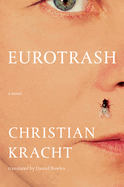
| Publisher: | Liveright | |
| Genre: | Dark Humor, World Literature, Germany - General, Family Life, Humorous, General, Literary, Fiction | |
| ISBN: | 9781324094562 | |
| Pub Date: | October 2024 | |
| Price: | $24.99 |
| Starred | Fiction |
by Christian Kracht, trans. by Daniel Bowles
In Eurotrash, the acutely observed, acerbic novel by Christian Kracht (The Dead), translated from the German by Daniel Bowles, a middle-aged man takes his octogenarian mother on a road trip. Kracht's narrator, a writer named Christian, spends much of the novel gazing at the wasteland of his family's past, wondering "how it had even been possible to succeed in extricating [himself] from [his] family's misery and mental illness," and become "a halfway normal human being." He's consumed by the legacy of his grandfather, an officer in the SS who resisted denazification.
Christian's childhood is catnip for Europhiles: a chalet in Gstaad adorned with priceless art, a summer home in St.-Jean-Cap-Ferrat, nights spent at media mogul Axel Springer's house in Kampen on the island of Sylt. However, there's rot at its core. His father, now dead, treated accumulating wealth and therefore power as his sole aim in life. Christian, who sees a connection between money and garbage, observes the world through a finely tuned lens of class.
Christian describes his alcoholic, ostensibly mentally ill mother as "caught in a spider web of resentment, fury, and loneliness," noting her taste for cheap wine, storage units for furs, and closets full of unworn Ferragamo shoes. He visits her every other month in Zurich, where she usually asks for a story. This time, however, Christian veers from the usual visit by ordering a taxi and embarking on a tour of his childhood, after a stop at a disappointing commune. Along the way of this biting family portrait, Christian's mother delightfully complicates his understanding of her mental capacities. --Nina Semczuk, writer, editor, and illustrator
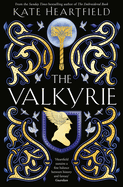
| Publisher: | Voyager | |
| Genre: | Medieval, Fairy Tales, Folk Tales, Legends & Mythology, Fantasy, Romance, Fiction, Historical | |
| ISBN: | 9780008567774 | |
| Pub Date: | October 2024 | |
| Price: | $18.99 |
| Fiction |
by Kate Heartfield
Brought together by a legendary hero, an exiled Valkyrie and a princess determined to protect her people find a place for themselves beyond the bounds of the Norse sagas in The Valkyrie, a vivid and inventive reimagining by Kate Heartfield (The Embroidered Book; Alice Payne Arrives).
Although Brynhild has been exiled from Valhalla and is no longer a Valkyrie, Odin isn't done with her yet. Maybe she defied him when she took the road to the east against his advice, or maybe he'd been manipulating her from the start. But there she finds a lindworm, "a great scaled serpent, with clawed feet and a head like a dragon's." She also finds the man with whom she'll fight it, Sigurd, whose deeds will live through the centuries. Meanwhile, Gudrun, a Burgundian princess, has been betrothed in a strategic alliance with one of the Hunnish brother-kings, but Attila seizes sole power and uses the lindworm to besiege the kingdom.
Heartfield makes the love story between Brynhild and Gudrun feel less like a new twist than a subtext that has always been present. Although their relationship frames the novel, each woman telling her side of the story to the other, its scope is worthy of an epic saga. Heartfield wrestles with issues of human versus divine will, the way a person can be corrupted by believing their own legends, and how people carry on even when overrun by clashes between great powers. Yet no matter how high the stakes become, the story never loses its heart. Fans of Song of Achilles by Madeline Miller and Uprooted by Naomi Novik should snatch this up. --Kristen Allen-Vogel, information services librarian at Dayton Metro Library
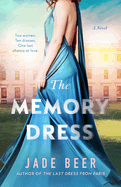
| Publisher: | Berkley | |
| Genre: | Women, Historical - General, General, Romance, Fiction, Historical | |
| ISBN: | 9780593436837 | |
| Pub Date: | November 2024 | |
| Price: | $19 |
| Fiction |
by Jade Beer
In Jade Beer's fourth novel, The Memory Dress, a very special gown brings together themes of love, loss, and the complexities of friendship. Told in the alternating voices of Jayne and Meredith, neighbors in a posh Bath apartment building, Beer's narrative examines the limits of memory, the challenges of loving someone with an incurable illness, and the unexpected ways community can emerge.
Quiet and introverted, Jayne is content living on her own. But an unexpected encounter with her downstairs neighbor, Meredith, piques Jayne's curiosity and leaves her both intrigued and worried. Meredith is pleasant, but she seems lonely and confused, wondering where her husband, William, has disappeared to. When Jayne sees the chaos in Meredith's apartment, she grows even more concerned. But when she spots a sumptuous pink silk dress tossed over a chair in Meredith's bedroom--a couture creation worn by Princess Diana--Jayne becomes determined to uncover some answers about Meredith, the gown, and the connection between the two.
Beer (The Last Dress from Paris) stitches her story together with the alternating threads of Meredith's career working for London designer Catherine Walker in the 1980s and Jayne in 2018 as she searches for William, probes Meredith's memory for the missing stories, and enlists her neighbors to help Meredith navigate the details of daily life. Beer sensitively explores the challenges of mental illness, the gifts (and the limits) of community, and the power of emotional bonds to change a person's life. The Memory Dress is a tribute to unlikely friendships, enduring love, and the history contained in every stitch of an exquisitely crafted garment. --Katie Noah Gibson, blogger at Cakes, Tea and Dreams
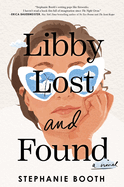
| Publisher: | Sourcebooks Landmark | |
| Genre: | Women, Friendship, Literary, Fiction | |
| ISBN: | 9781728278506 | |
| Pub Date: | October 2024 | |
| Price: | $27.99 |
| Fiction |
by Stephanie Booth
Libby Lost and Found is a heartwarming story steeped in fantastical elements yet starkly realistic in its depictions of loss, loneliness, and the power of caring.
Stephanie Booth's debut novel opens with a list of titles in the iconic Falling Children fantasy series by author F.T. Goldhero. The list is followed by a brief scene from the penultimate book, which depicts children seeking their "enchanted world," then abruptly shifts to a very unenchanted Princeton, N.J., where the real Goldhero, 40-year-old Libby Weeks, bemoans her protagonists' fate and muses that she "isn't cut out to have children, even fictional ones."
Libby is desperate. Her outraged fans are demanding the series' final installment, but she's just been diagnosed with early-onset dementia and has lost her inspiration. While scouring her fan mail for ideas, Libby finds 11-year-old Peanut Bixton, Goldhero's self-professed "biggest fan... in the UNIVERSE," and contacts her, pretending to be Goldhero's assistant. After a hilarious journey to Blue Skies, Colo., where Peanut lives with her quirky family, Libby continues her ruse, but the secrets in Blue Skies are as surprising as Libby's identity. Peanut is as bright and savvy a hero as any of the Falling Children, and while the impact of Libby's dementia is ever present, Peanut and her family offer Libby paths to her future. Hair-raising escapades and zany situations, including a very funny episode involving her publisher's marketing plans, lead one character to ask Libby: "Aren't you the one who writes happy endings? Write one for yourself." Libby Lost and Found is a fantasy wrapped up in a novel that's sweetened with the magic of love. --Cheryl McKeon, Book House of Stuyvesant Plaza, Albany, N.Y.
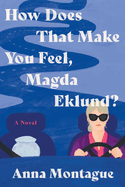
| Publisher: | Ecco | |
| Genre: | Women, Family Life, General, Literary, Fiction, LGBTQ+ | |
| ISBN: | 9780063353640 | |
| Pub Date: | October 2024 | |
| Price: | $28 |
| Fiction |
by Anna Montague
Magda Eklund is equal parts avoidant and ornery, and her wry humor propels a novel of identity, sexuality, and grief. Author Anna Montague deftly lightens the mood while digging into weighty subjects in her first novel, How Does That Make You Feel, Magda Eklund?
When her best friend, Sara, dies, New York City psychiatrist Magda is left with the unresolved conflicts of a relationship cut short. Sara's character, portrayed in absentia, comes through in vibrant, complex shades--full of energy and love, but with an impatient, sometimes cruel edge. As Magda sifts through her friend's possessions, she finds Sara's plan for the two of them to take a road trip for Magda's upcoming 70th birthday. She puts her work with a collection of hilariously irritating yet endearing patients on hold to complete the wide-ranging trip, with urn in hand.
The novel follows Magda as she meets a series of memorable characters, such as the owners of a bed-and-breakfast. Barb is amiably determined to be a good host and tries to rein in her partner, Nancy, who continually rags on therapy and the medical profession in general. "Doctors are there to make you miserable," Nancy asserts at one point. Eventually, Barb reveals that Nancy was forced into "conversion therapy," a poignant note in the novel's exploration of sexuality.
Magda gradually circles the conflicts she's been avoiding and cautiously approaches her own unacknowledged desires, making this a cathartic read. How Does That Make You Feel, Magda Eklund? is quiet and thoughtful, taking readers on an introspective journey complete with humor, redemption, and road-trip coffee. --Carol Caley, writer
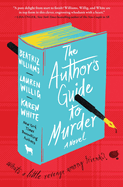
| Publisher: | Morrow | |
| Genre: | Women, Friendship, Mystery & Detective, Satire, Fiction, Women Sleuths | |
| ISBN: | 9780063259867 | |
| Pub Date: | November 2024 | |
| Price: | $30 |
| Mystery & Thriller |
by Beatriz Williams, Lauren Willig, Karen White
Individually, Beatriz Williams, Lauren Willig, and Karen White are historical-fiction-writing forces; working together (All the Ways We Said Goodbye; The Lost Summers of Newport), they're a power throuple. In The Author's Guide to Murder, their foray into contemporary mystery, each brings her own strength to the story--just like the three women they've brought to vivacious life on the page.
The novel opens with a crime scene at Kinloch Castle, located on a remote Scottish island. American novelist Brett Saffron Presley has been found facedown in a puddle of mead, an antler from a decorative stag's head in his back. Presley was renting out the castle for a writers' retreat attended by three Americans collaborating on a book: Cassie Pringle, cozy-mystery writer and stress baker; Emma Endicott, author of "historic bio-fics about unknown women," which are popular with university libraries if not the general public; and Kat de Noir, who knows she's wasting her advanced degree in sex by writing about "deeply clichéd sexy demons" to pay the rent. Naturally, the women become the main suspects in Presley's murder.
It's a sublime premise harboring a few terrific gasp-making reveals. While there's ultimately a serious topic at the novel's heart, The Author's Guide to Murder ceaselessly spoofs writerly egotism and publishing-world gimmickry (the women consider calling their book Fifty Shades of Plaid). In an impressive sleight of hand, Williams, Willig, and White, who know something about writing romance, manage to send up the tawdry bodice ripper while simultaneously paying it lovingly steamy tribute. --Nell Beram, author and freelance writer

| Publisher: | Ace | |
| Genre: | Friendship, Humorous, Fairy Tales, Folk Tales, Legends & Mythology, Fantasy, Fiction | |
| ISBN: | 9780593815915 | |
| Pub Date: | November 2024 | |
| Price: | $19 |
| Science Fiction & Fantasy |
by Julie Leong
In the heartwarming, uplifting fantasy adventure The Teller of Small Fortunes, Julie Leong's debut, a small-time fortune teller hiding from the highest echelons of power finds herself at the nucleus of a close-knit band of friends.
Tao travels from town to town with only the mule that pulls her wagon for company, selling her services telling fortunes. Tao came to the kingdom of Eshtera as a little girl but has the physical characteristics of someone from her birthplace, Shinara. Villagers often show her their xenophobic tendencies, and the truth of her fortunes unsettles people over time.
Two men happen upon her trying to chop through a fallen tree blocking the road. She soon learns one of the men is a reforming thief; his friend, a former mercenary, is on the road searching for his lost little girl. They decide to join Tao on her journey to the next town, where their party is joined by a baker's apprentice. Soon Tao is surrounded by a circle of support she never could have imagined. As her past dogs her heels, Tao must decide how far she'll go to protect herself and to help her friends.
Leong is unafraid to head into deeply emotional territory in this sweet, earnest story of found family and finding one's truth. She strikes a lovely balance between high stakes, humor, and touching moments. Each character's growth feels logical and earned. Readers of Travis Baldree will enjoy following wherever Leong leads, and they can be sure she will only take them down dark paths to show them the light waiting at the end of the trail. --Jaclyn Fulwood, blogger at Infinite Reads
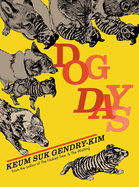
| Publisher: | Drawn & Quarterly | |
| Genre: | Manhwa, Literary, Comics & Graphic Novels, East Asian Style | |
| ISBN: | 9781770467316 | |
| Pub Date: | October 2024 | |
| Price: | $24.95 |
| Starred | Graphic Books |
by Keum Suk Gendry-Kim, trans. by Janet Hong
Cartoonist Keum Suk Gendry-Kim (Grass; The Waiting) wanted Dog Days to serve "as a record of an era" and pose "questions about the relationships between humans and dogs" following the passage of South Korea's legal ban on the dog-meat industry in January 2024. In black-and-white illustrations, the narrator, Yuna, evolves from a skeptic who reluctantly agrees to her partner's desire to bring a puppy home to a dog lover who rambles through the Korean countryside on long walks with not one but three pups. Each chapter revolves around a dog or memory, including the characters' own beloved pets, Carrot and Potato, and the various dogs around their community who either roam free or are chained up and otherwise uncared for, such as Blackie, Elvis, and Choco, the latter of whom they eventually adopt. Gendry-Kim's characters wrestle with a challenge all too familiar to devoted pet owners: weighing the desire to save every dog who needs help against the precarious and demanding ecosystem of a home already filled with furry friends.
The vignettes of country life are as heartwarming as they are unsettling, contrasting a local history of dog harm with the universal human experience of beauty and worry that come with caring for a dog. Gendry-Kim's limited color palette is incredibly effective; her illustrations are textured and emotional, particularly when capturing the nuances of canine facial expressions. Dog Days is an affecting portrayal of not only how dogs change the lives of the humans they interact with but also how people can cause a ripple effect in their environment through consistent compassion for their hounds. --Kristen Coates, editor and freelance reviewer
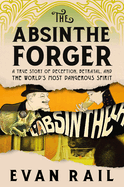
| Publisher: | Melville House | |
| Genre: | True Crime, Cooking, Con Artists, Hoaxes & Deceptions, Heists & Robberies, Alcoholic - Spirits, Beverages | |
| ISBN: | 9781685891541 | |
| Pub Date: | October 2024 | |
| Price: | $32 |
| Current Events & Issues |
by Evan Rail
The herbaceous liquor known as "the Green Fairy" has an unrivaled cachet as the spirit that inspired artists such as Vincent van Gogh and Oscar Wilde, although it was banned internationally in the early part of the 20th century. Evan Rail's The Absinthe Forger is a captivating narrative nonfiction exploration of an intricate fraud that sent shockwaves through the world of absinthe aficionados.
Through Rail's interviews with experts, collectors, and law enforcement, a vivid picture emerges of the forger and the lengths he went to perpetrate his fraud. He was a shadowy figure of disputed nationality residing in London; many in the community had met him and his expertise was unquestioned. The scam: he'd buy old empty bottles online from the "pre-ban" era, age corks by charring them, and fill the bottles with a mixture of contemporary absinthe and other herbs. Then he'd claim to have discovered a cache of the good stuff in some newly accessible palazzo cellar. But a gang of absinthe lovers eventually started matching these "recently discovered" bottles being sold to collectors as "pre-ban" by their distinguishing markings, label tears, and stains.
With a keen eye for the absurd and a matching mastery of detail, Rail, a food writer with bylines in the New York Times and Saveur, weaves an engrossing study of the culture of absinthe. The Absinthe Forger is a compelling, more-than-the-sum-of-its-parts read for anyone interested in true crime, food, drink and cocktail culture, or the fascinating subculture of rarities collection. --Elizabeth DeNoma, executive editor, DeNoma Literary Services, Seattle, Wash.
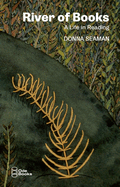
| Publisher: | Ode Books | |
| Genre: | Biography & Autobiography, Editors, Journalists, Publishers, Literary Criticism, Memoirs, Books & Reading | |
| ISBN: | 9781734643565 | |
| Pub Date: | November 2024 | |
| Price: | $13.95 |
| Essays & Criticism |
by Donna Seaman
Donna Seaman (Identity Unknown), who has dedicated her life to literary criticism--she's the adult books editor at Booklist and a veteran reviewer--turns her critical gaze on herself in the lovely little River of Books, a short-form autobiography offering a long-form answer to the question: How did you find your calling, Donna Seaman?
Seaman and her sister were raised to be readers in a middle-class secular Jewish household in Poughkeepsie, N.Y. A temperamental kid who "approved of Eeyore," Seaman discovered that when she was reading, "I was engrossed, not overwhelmed. The me I despised disappeared." Was her professional fate sealed when her father made her allowance contingent on writing about the books she adored? Maybe, but her path to reviewing wasn't linear, as this memoir makes entertainingly plain.
While River of Books covers the major plot points of Seaman's life leading to her career-making Booklist gig, her only romance along the way seems to have been with books. She moons over libraries ("I purred over the lined cards in the cardboard pockets pasted inside the books") and swoons over fiction writers ("What an endlessly strange and marvelous feat it is to so convincingly imagine a richly dimensional individual navigating complicated predicaments in a convincingly rendered world"). Seaman frequently interrupts her storytelling to reflect on her formative reading material, including two lifelong favorites: Louisa May Alcott's Little Women and Charles Dickens's David Copperfield. Her quick takes hint at the rewards that are already known to regular readers of her critiques. --Nell Beram, author and freelance writer
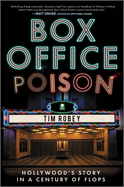
| Publisher: | Hanover Square Press | |
| Genre: | History & Criticism, Film, Performing Arts | |
| ISBN: | 9781335147318 | |
| Pub Date: | November 2024 | |
| Price: | $32.99 |
| Starred | Performing Arts |
by Tim Robey
Cinephiles who love behind-the-scenes stories about commercial failures will savor the entertainingly chatty Box Office Poison by Tim Robey, a film critic for Great Britain's Daily Telegraph. Box-office fiascos, he writes, are "the medium's weirdos, outcasts, misfits, [and] freaks." Some of them thoroughly deserved their grisly deaths, while others proved to have been misunderstood in their day. Robey covers it all, from silent misfires like Erich von Stroheim's 1929 "beautiful ruin" Queen Kelly to such 21st-century train wrecks as Oliver Stone's 2004 Alexander. His criteria for the ignominy of inclusion: each film had to be a "freshly entertaining" comedy of errors, and "their commercial fortunes need to have been genuinely atrocious."
As Robey notes in this well-written perverse pleasure, not every box-office dud is a stinker. Audiences avoided some films that were ahead of their time, such as 1935's Sylvia Scarlett, in which Katharine Hepburn's title character hacks off her hair "to become a boy named Sylvester." Others are well-made sequels that deviated from expectations set by the original, such as 1998's Babe: Pig in the City. But many of these movies were travesties, such as the 2019 adaptation of the "inescapably weird stage musical" Cats and, just as notoriously, 1967's Doctor Dolittle. The shoot for the latter was "a nightmare from the start," with Rex Harrison's prima donna behavior proving to be a far bigger problem than, say, the giraffe that "held up shooting for days when it reportedly stepped on its own penis." Readers of this gossipy delight will have a much better time than that giraffe. --Michael Magras, freelance book reviewer
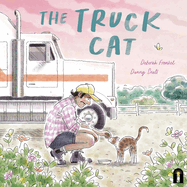
| Publisher: | Bright Light | |
| Genre: | Cats, Animals, Emigration & Immigration, Social Themes, Juvenile Fiction, Diversity & Multicultural | |
| ISBN: | 9781761212291 | |
| Pub Date: | October 2024 | |
| Price: | $18.99 |
| Starred | Children's & Young Adult |
by Deborah Frenkel, illust. by Danny Snell
Occasionally a picture book comes along with a story unlikely to remind readers of any other. So it is with The Truck Cat, from Deborah Frenkel (The Sydney Harbour Fairy) and Danny Snell (The Turtle and the Flood). This Australian import satisfies as a straight-up pet tale while also telling a weighty story about belonging.
Cat Tinka rides with a trucker named Yacoub, who drives "all around the country." (The country goes unnamed.) At rest stops, Tinka notes that "other humans didn't always understand Yacoub: his jokes, his words. His silences." Back in the truck, Yacoub is voluble, sharing with Tinka memories of his "home country." (It, too, goes unnamed.) Tinka understands his yearning: he "also had an old home, full of mewling siblings." One morning, Yacoub and Tinka are at a rest stop when the cat has a brush with death while chasing a butterfly. He's rescued by a woman, Mari, who will eventually offer a kind of salvation to Yacoub as well.
The Truck Cat could be exhibit A for the "show, don't tell" storytelling philosophy. Frenkel chooses her language so carefully that she can (and does) omit the words "immigration" and "loneliness" from a book that's about both. Snell's sure hand and generous use of panels facilitate Frenkel's don't-spell-it-out approach. The book's last few pages, starting with an image featuring silhouettes of Yacoub and Mari chatting on the day they meet, indicate that they will have a lifetime's worth of conversations with Tinka underfoot. --Nell Beram, freelance writer and YA author
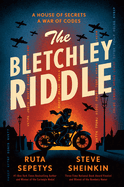
| Publisher: | Viking Books for Young Readers | |
| Genre: | Spies & Spying, Mysteries & Detective Stories, Military & Wars, Juvenile Fiction, Historical | |
| ISBN: | 9780593527542 | |
| Pub Date: | October 2024 | |
| Price: | $18.99 |
| Starred | Children's & Young Adult |
by Ruta Sepetys, Steve Sheinkin
Carnegie Medal-winning author Ruta Sepetys and three-time National Book Award finalist and Newbery Honor author Steve Sheinkin team up to construct a thrilling and often hilarious fictionalized depiction of activity at Bletchley Park, the real-life British center that succeeded in decrypting communications between the Axis nations during World War II.
On the brink of the German invasion of England, 19-year-old math whiz Jakob has been recruited to crack German codes at the Government Code and Cypher School at a renovated English country estate. When his 14-year-old sister, Lizzie, shows up after their mother's presumed death during a bombing raid at the American embassy in Warsaw, Poland, she becomes Jakob's responsibility. Bletchley Park officials require her to sign the Official Secrets Act, after which she is assigned to serve as a messenger between the secret intelligence departments. Meanwhile, Lizzie appoints herself lead investigator into the disappearance of their mother--is it possible, as some believe, that their mother is a spy for the Nazis?
Sepetys is known for her spellbinding historical fiction (I Must Betray You) and Sheinkin for historical nonfiction (Impossible Escape) that is utterly action-packed. In The Bletchley Riddle, the authors use alternating voices to capture the markedly different attitudes and personalities of the siblings. Lizzie's straightforward and precocious ways are not always welcomed by her elders, while Jakob's serious, anxious tone reflects the burden of responsibility he feels, both to his family and his country. This middle-grade novel is sure to transcend age ranges and is both mystery and historical fiction, with a healthy dose of adventure and the tiniest hint of young romance. --Emilie Coulter, freelance writer and editor
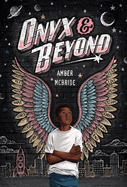
| Publisher: | Feiwel & Friends | |
| Genre: | Parents, Family, United States - 20th Century, Social Themes, Depression & Mental Illness, Juvenile Fiction, Historical | |
| ISBN: | 9781250908780 | |
| Pub Date: | October 2024 | |
| Price: | $17.99 |
| Starred | Children's & Young Adult |
by Amber McBride
National Book Award finalist Amber McBride (Me (Moth); We Are All So Good at Smiling) delivers a poignant yet heartening story about a Black boy trying to keep his mama's early-onset dementia diagnosis a secret in the middle-grade novel-in-verse Onyx & Beyond.
April 5, 1968, the day after MLK died, is the day 12-year-old Onyx remembers his mama misplacing road signs. The doctors said it's early onset dementia, and Onyx and his gran "worked together & kept it a secret" so Mama wouldn't be institutionalized. Two years later, Gran has died and Mama has gotten worse, so Onyx must "be like smoke & hover/ & keep Mama safe." But keeping Mama's disease a secret weighs on Onyx, who dreams of flying to the moon so he can bring back "magic rocks" that will heal her, and it might finally be time to get help.
Onyx & Beyond is a touching story about grappling with a loved one's health while being a Black boy in America during the late 1960s and early '70s, when "there's a revolution on every corner." An author's note shares that McBride's grandmother has progressive dementia and this experience shows in how Onyx handles living with his own afflicted loved one--for example, using music to "pull the memories back to Mama/ like magic." McBride is effective with her use of repetition and different poetic forms to express Mama's confusion and Onyx's anxiety. McBride delivers a welcome message about the might of hope and importance of community in this emotional yet encouraging story. --Lana Barnes, freelance reviewer and proofreader

| Publisher: | Andersen Press | |
| Genre: | Humorous Stories, Monsters, Juvenile Fiction | |
| ISBN: | 9798765643495 | |
| Pub Date: | October 2024 | |
| Price: | $18.99 |
| Children's & Young Adult |
by Karl Newson, illust. by Zehra Hicks
The snappy rhymes of Karl Newson (How to Be Brave) are paired with the fun visual clues of Zehra Hicks (Cheeky Monkey)in Watch Out! There's a Monster Coming!, an exuberant tale that turns fear of a monster into anticipation of a party.
A tan pup and a child of color with adorable, red-ribboned pigtails track the approach of a green monster. Despite its large lime-green eyes, the monster doesn't look too scary--the purple nails on its front paws plus a bright red satchel take the edge off the terror. But the monster's words are fearsome: "You're out there somewhere,/ aren't you now.../ Delicious as can be.// Waiting to be gobbled up/ by someone just like me." The monster moves to a rooftop ("I'll sprinkle you with chocolate chips") and the child hero and dog peer up out of windows as the monster climbs onto their own roof: "I'll drizzle you in jam./ Who's hungry for a chew on you?" A page turn reveals a show-stopping double-page spread in which the monster is surrounded by a saturated golden hue, its paw raised and its toothy smile revealing a purple tongue to match its nails. "ME!/ I am!"
Eagle-eyed readers will pick up on subtle hints throughout the book (such as ribbons, confetti, and glitter on the copyright and title pages) that show what the monster really wants: cake. Repetition of text--the monster sings a refrain of, "Here I come to fiiind you!/ Creeping up behiiind you!"--will likely make this book a read aloud favorite. --Jennifer M. Brown, reviewer
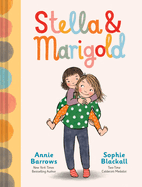
| Publisher: | Chronicle | |
| Genre: | Friendship, Family, Social Themes, Imagination & Play, Juvenile Fiction, Siblings | |
| ISBN: | 9781797219707 | |
| Pub Date: | October 2024 | |
| Price: | $15.99 |
| Children's & Young Adult |
by Annie Barrows, illust. by Sophie Blackall
Annie Barrows and Sophie Blackall rejoin forces in Stella & Marigold, a charming and astute snapshot of sisterhood with immediate appeal for fans of their celebrated prior collaboration, the Ivy and Bean series.
Stella's world truly began once Marigold joined it. "Stella was seven, and Marigold was four," and, from the instant they met, their sibling bond ran deep. "It was Stella who explained the world" to Marigold, and Stella's inventive secrets (such as their bathroom having magical powers) sagely contextualize the more mercurial preschooler's classic childhood experiences. Together the pair brave the highs and lows of youth, including a soured trip to the zoo as well as the thrill of being left home alone.
The series starter's seven chapters stand as distinct vignettes, though sly continued references, notably Marigold's intrigue by the sink drain, reward attentive readers. Barrows and Blackall capture quintessential childhood moments, like sore throats, friendship worries, and little fibs that fill one with remorse. Stella and Marigold's adventures are neither instructive nor idealized, and this relatable imperfection only elevates the appeal of their wholesome hijinx, reminiscent of Ramona or Dory. Barrows employs well-paced third-person narration that uncannily captures a youthful mindset, and her careful development of the children's distinct personalities further serves exploration of their deep sibling bond. Two-time Caldecott Medalist Blackall expands moments both real and imagined through cozy digital illustrations that vary delightfully in both size and configuration to elevate every spread. The union is jubilant, and Stella and Marigold's simple moments evoke sheer delight. --Kit Ballenger, youth librarian, Help Your Shelf